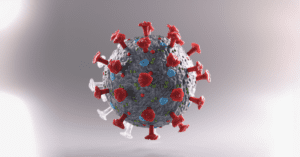
Written by Dr Hannah K Shorrock
Edited by Dr Vitaliy V Bondar
Measuring levels of polyQ ATXN3 proteins in cerebrospinal fluid and plasma distinguishes SCA3 patients from unaffected individuals
For disease-modifying medicines or therapies to be approved for use in the clinic, the treatments must demonstrate success at meeting pre-set criteria in clinical trials. The design of clinical trials is therefore incredibly important for therapy development: poorly designed trials are unlikely to result in therapy approval. The likelihood of successfully developing treatments is increased by using appropriate biomarkers to measure target engagement of the therapy. Rare neurodegenerative diseases such as Spinocerebellar ataxia type 3 (SCA3) need academic support to de-risk future clinical trials and enhance the success of drug development. To improve SCA3 clinical trial design and the probability of success, the group headed by Dr. Petrucelli, developed an assay to measure polyglutamine (polyQ) ATXN3 protein levels from cerebrospinal fluid (CSF) and blood plasma.
The group used an antibody-based assay (immunoassay) to measure the amount of polyQ ATXN3 in human biofluids for two study cohorts. Cohort 1 comprised 54 SCA3 patients, 4 presymptomatic ATXN3 expansion carriers, and several different control groups: 56 healthy individuals, 21 symptomatic individuals with other forms of cerebellar ataxia including different types of spinocerebellar ataxias, and 54 patients with motor neuron disease caused by a repeat expansion. For individuals in cohort 1, blood plasma or/and CSF were available. Cohort 2 included plasma from 30 healthy controls, 40 SCA3 patients, and two presymptomatic ATXN3 expansion carriers. For the SCA3 individuals in the study, clinical features including SARA score, gait motility, age of ataxia onset, and disease duration were recorded.
In both cohorts, polyQ ATXN3 levels could perfectly differentiate between SCA3 patients and each control group. ATXN3 levels were significantly higher in plasma and CSF from SCA3 patients compared to healthy controls, patients with other types of SCA or cerebellar ataxias, and patients with different repeat expansion diseases. This shows that elevated polyQ ATXN3 levels are unique to SCA3 patients and can be used as a diagnostic biomarker, although genetic testing will remain the gold standard for SCA3 diagnosis. The group found that CSF polyQ ATXN3 levels were significantly higher in symptomatic ATXN3 expansion carriers compared to presymptomatic ATXN3 expansion carriers and could accurately differentiate between symptomatic and presymptomatic ATXN3 expansion carriers. However, they found no association between clinical features and plasma NfL levels, CSF NfL levels, or CSF polyQ ATXN3 levels. For plasma polyQ ATXN3 levels, there was a weak but significant association between earlier disease onset, increased gait impairment, and longer ATXN3 repeat lengths with increased polyQ ATXN3 levels. However, this association did not remain significant when the analysis was corrected for age, sex, or disease duration. While this suggests that NfL and polyQ ATXN3 levels are unable to track disease progression or severity, a longitudinal study of these biomarkers and clinical features over time in the same individuals will need to be performed to thoroughly assess this.
Neurofilament light chain (NfL) levels in plasma and CSF have previously been identified as clinically relevant biomarkers for neurodegenerative diseases. In the present study, the group found that NfL levels in CSF were significantly higher in SCA3 patients than in healthy controls and the cohort of patients with other cerebellar ataxias. Similar to polyQ ATXN3, CSF NfL levels perfectly differentiated healthy controls from SCA3 patients. Likewise, plasma NfL was significantly increased in SCA3 patients compared to healthy controls and patients with other forms of ataxia and could differentiate between healthy controls and SCA3 patients. CSF and plasma NfL levels were significantly lower in asymptomatic ATXN3 expansion carriers compared to symptomatic patients. CSF NfL levels could perfectly differentiate between symptomatic and presymptomatic ATXN3 expansion carries. This indicates that CSF NfL may be a useful biomarker for determining inclusion criteria for clinical trials.
To identify whether polyQ ATXN3 or NfL levels can track disease progression and severity the group investigated associations between the biomarkers and clinical features. As expected, based on previous studies, the group found a significant correlation between longer repeat lengths, an earlier age of ataxia onset, and increased SARA score severity. However, they found no association between clinical features and plasma NfL levels, CSF NfL levels, or CSF polyQ ATXN3 levels. For plasma polyQ ATXN3 levels, there was a weak but significant association between earlier disease onset, increased gait impairment, and longer ATXN3 repeat lengths with increased polyQ ATXN3 levels. However, this association did not remain significant when the analysis was corrected for age, sex, or disease duration. While this suggests that NfL and polyQ ATXN3 levels are unable to track disease progression or severity, a longitudinal study of these biomarkers and clinical features over time in the same individuals will need to be performed to thoroughly assess this.
Next, the group wanted to assess the ability of their polyQ ATXN3 immunoassay to detect changes in the protein levels following an ATXN3 reducing strategy. To do this, the group used SCA3 patient and healthy control-derived fibroblasts from the individuals in their study. Initially, the group confirmed that polyQ ATXN3 levels were higher in SCA3 patient fibroblasts compared to fibroblasts from healthy controls and patients with other cerebellar ataxias. They also identified that the polyQ ATXN3 levels in SCA3 fibroblasts significantly correlated with polyQ ATXN3 levels in the patients’ CSF samples but not plasma. The group then treated the SCA3 and control fibroblast lines with small interfering RNAs (siRNAs) targeting ATXN3 or a control siRNA. The polyQ ATXN3 immunoassay detected a selective reduction of ATXN3 protein levels by 48% to 72% in SCA3 fibroblast lines following treatment with ATXN3 targeting siRNA. This demonstrates that the polyQ ATXN3 immunoassay can detect changes in ATXN3 protein levels in response to disease-modifying therapies and can measure the variable response in SCA3 patients to these treatments.
The research group had one final question they wanted to address in this study: is it possible to selectively target only the ATXN3 allele that contains the repeat expansion? Selectively targeting the expanded allele would minimize the detrimental effects of disrupting the normal allele. The group found that a particular single nucleotide polymorphism (SNP) located 132 bases after the end of the ATXN3 CAG expansion, was much more frequent in ATXN3 expansion carriers than in healthy controls. In 87% of SCA3 expansion carriers studied, an SNP that resulted in a shorter, more aggregate-prone ATXN3 protein was present at this location. Only 47.7% of healthy controls had this same SNP. In 90% of SCA3 patients with the SNP, it was located on the same copy of the ATXN3 gene as the CAG repeat expansion. The group concluded that this SNP could be used to distinguish between the non-expanded ATXN3 allele and the SCA3 causing expanded ATXN3 allele in SCA3 patients.
The current means to measure the success of therapies in clinical trials rely on clinical measures, such as the SARA score and magnetic resonance imaging (MRI). There are, however, limitations to using these measures. SARA scores are affected by examiner bias and require patient cooperation while MRIs are expensive, and it is often hard to recapitulate results between different hospital sites. As potential therapies for SCA3 move toward clinical trials, it is becoming increasingly important to develop reliable methods for assessing target engagement and monitoring treatment efficacy. The development of immunoassays to measure therapeutically relevant biomarkers from patient biofluids will help to improve clinical trial design for SCA3 and will pave the way to develop similar assays for other SCAs caused by CAG repeat expansions.
Conflict of Interest Statement
The author and editor declare no conflict of interest.
Citation of Article Reviewed
Prudencio, M., Garcia-Moreno, H., Jansen-West, K. R., Al-Shaikh, R. H., Gendron, T. F., Heckman, M. G., … & Petrucelli, L. (2020). Toward allele-specific targeting therapy and pharmacodynamic marker for spinocerebellar ataxia type 3. Science translational medicine, 12(566), eabb7086. https:/doi.org/10.1126/scitranslmed.abb7086

Los científicos desarrollan un nuevo enfoque para evaluar la Ataxia en casa
Escrito por Ziyang Zhao Editador por la Dra. Hayley McLoughlin Traducido por Ismael Araujo Aliaga Una aplicación para teléfonos inteligentes recientemente desarrollada permitirá a los pacientes evaluar la ataxia en casa. Existe Read More…

The SCA2 Chronicles: Unmasking COVID-19’s impact on Mind and Movement in a Galaxy Not So Far Away
Written by Kaitlyn Neuman Edited by Celeste Suart, PhD Lessons from a global pandemic: COVID-19 negatively impacts speech function and mental health in SCA2 patients. A short time ago, in a Read More…

Online Speech Therapy program helps improve speech in ataxia
Written by Caroline Spencer, PhD Edited by Celeste Suart, PhD ClearSpeechTogether is a virtual group-based speech therapy program for people with speech problems due to progressive ataxia. In this article, researchers Read More…










